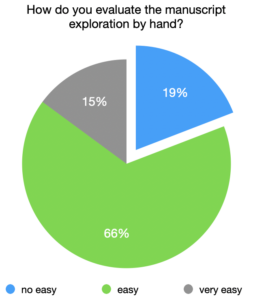Patrizia Schettino, Eva Pietroni, Enzo d’Annibale: Re-thinking visitor experience with ancient manuscripts through the holographic showcase. The case of the project Codex4d and its first public results from a mix method evaluation in situ. In Heritage 2023, Volume 6, Issue9, MDPI, pp.6035-6065; https://doi.org/10.3390/heritage6090318, https://www.mdpi.com/2571-9408/6/9/318
Abstract
Ancient manuscripts are precious and fragile objects, preserved in libraries, museums, and archives. Some of them are masterpieces, made with several materials and insights, butgenerally they are not accessible to wide communities of users. The purpose of this study is to present the preliminary results of the Codex4D project: a holographic showcase, conceivedfor museums, presenting the first 4D model of an ancient manuscript to the public at the Science Festival in Genoa in 2022. The manuscript, preserved in the Angelica Library in Rome, has been represented in a multidimensional digital model, documenting both its visibleand invisible aspects, on the surface and in the stratigraphic layers. We analysed the visitorexperience: informal learning, the meaning-making process, interactions between visitors, and gesture-based interaction with the showcase. The methodology used for evaluation is basedon four different qualitative methods (grounded theory, narrative inquiry, case study, and digital ethnography). We collected notes from observation, narratives from interviews, and answers from structured interviews. The main findings are patterns of the visitors’ experiences with a digital interactive 4D model of an ancient manuscript, supported by storytelling, and a list of design issues and possible improvements for the next version of the Codex4D holographic showcase.
Keywords:
ancient manuscript; 4D digital models; holographic showcase; visitor study; mixedmethods; storytelling; gesture-based interaction; grounded theory; ethnography

